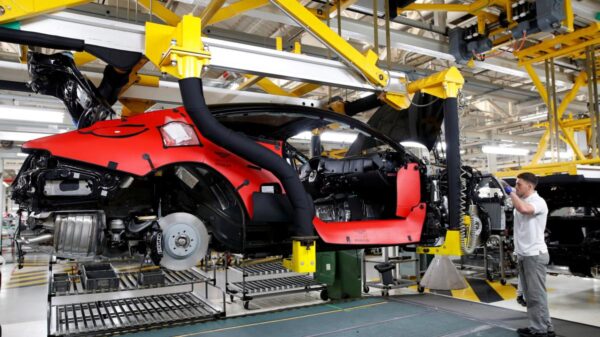
British manufacturing output grew at the fastest speed in six months in January because global supply chain pressure began to subside and the factory mostly lifted a wave of cases caused by omicron coronavirus variants, a survey showed on Tuesday.
The Markit IHS / CIPS (PMI) purchasing manager index showed the output index rose to 54.5 in January – the highest since July 2021 – from 53.6 in December, stronger than the initial Flash estimate of 53.8.
Factories employ workers at the second fastest level in 11 years, and they report some easing of inflationary pressure.
“Even though the supply chain constraints continue to be a stymie growth, there are signs that this passes through their peaks, a factor that contributes to a slight easing in the inflation of purchase prices,” Ihs Markit said.
The softening price pressure will be welcomed by the Bank of England, which is widely expected to raise interest rates on Thursday for the second time in less than two months due to fears that high inflation can be proven persistent.
Headline PMI fell to the lowest level of four months 57.3 in January from 57.9 in December, which reflected the weakest growth of new orders since February 2021 and faster delivery of suppliers – the factor that presses the index like at normal time is a sign of backup capacity .
The British economy only regained pre-crisis size in November, and many economists took into account around 0.5% from December and January when the Covid-19 case surge hit hospitality and office staff were recommended to work from home if possible.
On Sunday, the British industrial confederation said its members would estimate the growth of the private sector in three months to January was the weakest for three months to April, when many businesses still operate under locking.
However, PMI data on Tuesday showed several relief in supply chain disorders that had contributed to consumer price inflation rising to the highest in almost 30 years.
PMI shows the price of producer input rises at the slowest speed since April 2021 while output prices rose at the slowest speed since May – although both the two price increases were far above their long-term average.









